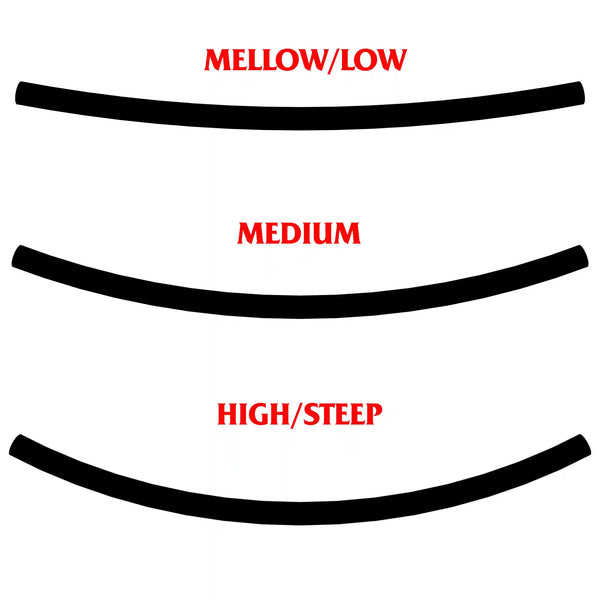Skateboard concave
This article will tell you everything you need to know about skateboard deck concave . We'll cover the topic in detail, especially for beginners reading this: Please don't be intimidated; the differences in concave between decks are minimal. An experienced skater who develops certain preferences over time will definitely notice the difference. For beginners, however, this is negligible.
Concave refers to the longitudinal curve of the deck between the nose and tail. Until the 1980s, skateboard decks were mostly flat, until concave became increasingly popular due to its improved control and maneuverability. Concave should not be confused with nose and tail kick, i.e., how steeply the nose and tail are curved upwards, although these are usually related to the concave. Decks with a steeper concave usually also have more nose and tail kick, but not always.
Some manufacturers also give the nose and tail a slight concave. You usually can't see it with the naked eye, but this minimal curvature makes the deck a bit more responsive.
The concave can be uniform along the sides, but on some decks it becomes slightly flatter in the middle and more pronounced towards the trucks. This is because that's where you're most likely to position your feet for flip tricks, and where you need the most support from the curve.
So, which deck with which concave should you buy?
Concaves are generally divided into three categories: mellow or low, medium, and steep or deep. There are no precise angles or radii used to classify concaves; manufacturers usually name their shapes according to their own perception, and the transitions between them are fluid.
The following image somewhat exaggerates the different concave types in the cross-section of the deck:

Advantages and disadvantages of each concave shape:
Generally, a deck with less concave reacts less strongly to flips, etc., and softens more quickly. It requires more energy to perform flips, but offers more stability, is easier to control, and more comfortable for landings. Although a deck with less concave requires slightly more energy to flip, technical street skaters usually prefer a flat to medium concave because the flips are easier to control and more consistent.
The steeper the concave, the more stable and break-resistant the deck becomes.
Another thing to keep in mind: the wider the deck, the more you'll notice the concave. Because the curve of the concave continues steadily to the side edges and doesn't flatten out, the concave becomes deeper as the deck gets wider.
Although some companies now press their decks individually (single press), other manufacturers press up to five decks simultaneously. This results in minimal differences in concave, as the decks in the middle are slightly flatter than those at the top or bottom of the press. Again, these differences are minute and barely perceptible to the naked eye.
Don't stress too much about the concave. If you're still unsure which concave is right for you, go for a medium one; you can't go wrong with that. Over time, you can try steeper or shallower concaves to feel the difference.




